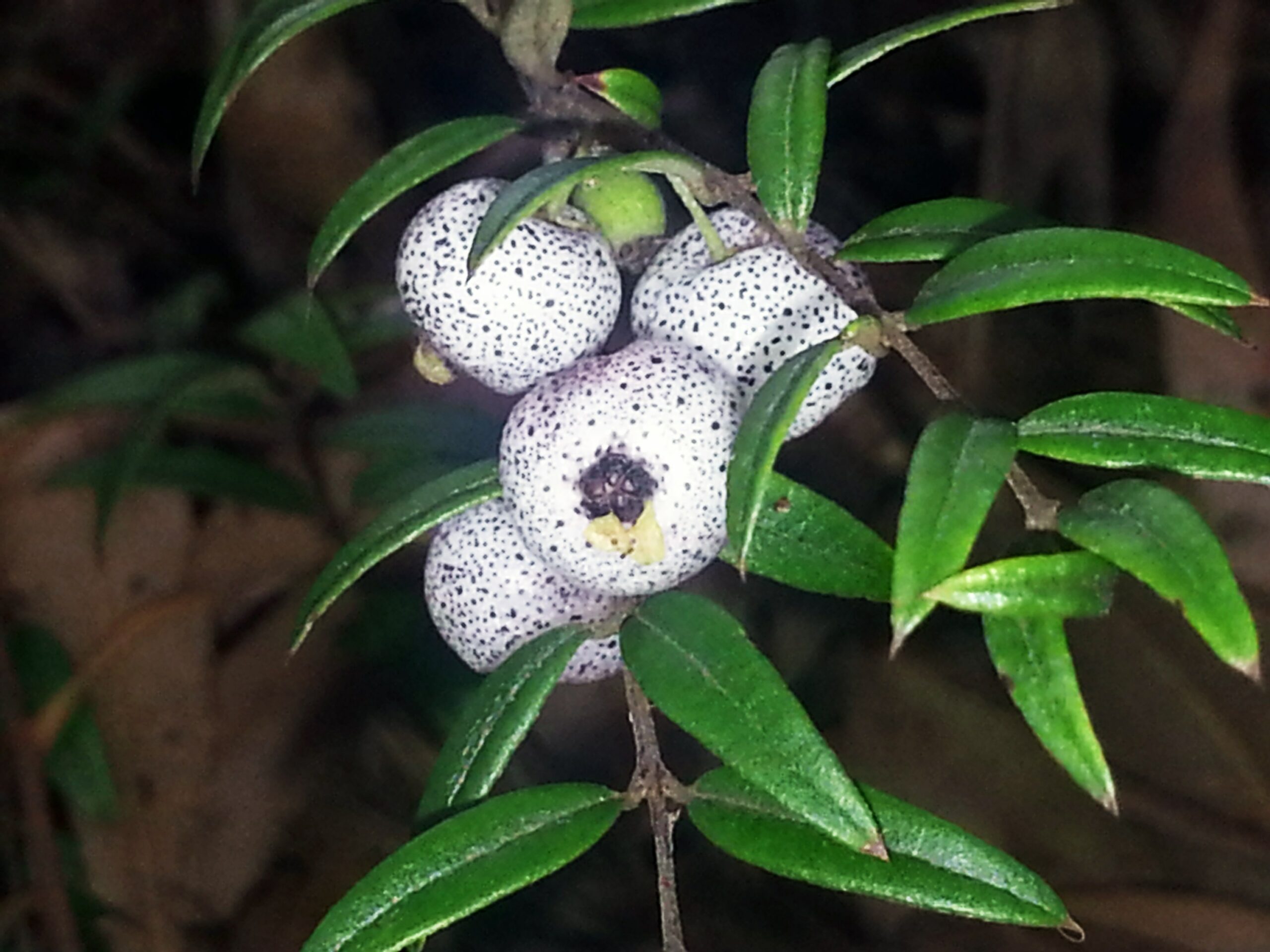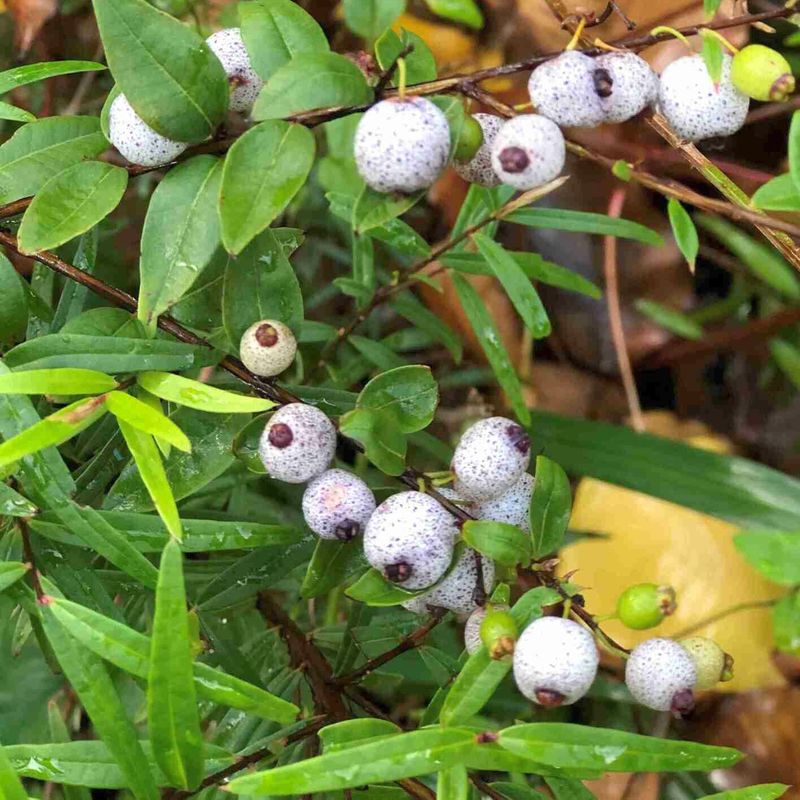
Absolutely! Here’s a comprehensive article on Midyim berry plant identification, complete with a recipe section, written in English and aiming for around 1200 words.
Unveiling the Midyim Berry: A Guide to Identification and Culinary Delights
The Australian landscape is a treasure trove of unique flora, and among its most captivating offerings is the Midyim berry ( Austromyrtus dulcis ). This unassuming shrub, often overlooked by the casual observer, holds within its small, sweet fruits a delightful taste of the Australian bush. For foragers, gardeners, and culinary enthusiasts alike, understanding how to identify the Midyim berry plant is the first step to unlocking its delicious potential. This article will guide you through the key characteristics of Austromyrtus dulcis, enabling you to confidently distinguish it from other plants and explore its culinary applications.

The Midyim Berry: A Botanical Profile
The Midyim berry belongs to the Myrtaceae family, a diverse group of plants that includes well-known species like eucalyptus, bottlebrush, and tea tree. Austromyrtus dulcis is native to the coastal regions of eastern Australia, typically found in sandy soils, heathlands, and open forests. Its common name, Midyim, is derived from the Indigenous Aboriginal language of the Bundjalung people, reflecting the long-standing relationship between Indigenous Australians and this valuable resource.
Key Identification Features: A Closer Look
To confidently identify a Midyim berry plant, it’s essential to examine several of its distinguishing features:
1. Growth Habit and Size:
- Shrubby Nature: Austromyrtus dulcis is primarily a shrub, typically growing to a height of between 0.5 to 2 meters. It can sometimes present as a small tree in ideal conditions, reaching up to 3 meters, but this is less common.
- Spreading Growth: The plant often exhibits a somewhat spreading habit, with multiple stems arising from the base. This can create a dense, bushy appearance.
- Bark: The bark is generally smooth and greyish-brown, though it can become slightly rougher with age.

2. Leaves: The Foundation of Identification:
The leaves of the Midyim berry are one of its most consistent and easily identifiable features.
- Shape and Size: They are typically oval to elliptical in shape, measuring approximately 2-5 cm in length and 0.5-1.5 cm in width. The leaves are relatively small and often have a pointed or slightly rounded apex.
- Arrangement: The leaves are arranged oppositely along the stems, meaning they grow in pairs directly across from each other. This is a crucial characteristic for distinguishing it from plants with alternate leaf arrangements.
- Texture and Color: The upper surface of the leaves is usually a glossy, dark green, while the underside is paler, often with a slightly duller finish. The leaves are generally smooth and leathery to the touch.
- Venation: The venation (the pattern of veins) is typically reticulate, meaning the veins form a net-like pattern. You might also notice small, translucent dots on the leaves when held up to the light; these are oil glands, common in the Myrtaceae family, and contribute to the plant’s aromatic qualities.
3. Flowers: Delicate and Aromatic Blooms:
The flowering period for Midyim berries usually occurs from late spring to summer (October to January in Australia).
- Appearance: The flowers are small, delicate, and star-shaped, measuring about 1-1.5 cm in diameter. They possess five prominent, white petals that are often slightly crinkled or ruffled.
- Stamens: A distinguishing feature of the flowers is the abundance of prominent stamens, which are typically white or pale pink and extend beyond the petals, giving the flower a fluffy appearance.
- Fragrance: The flowers are often sweetly fragrant, releasing a pleasant scent that can attract pollinators.
- Location: They typically appear singly or in small clusters in the leaf axils (the angle between the upper side of the stem and a leaf growing from the stem).
4. Fruits: The Prize of the Plant:
The Midyim berry itself is the most sought-after feature and is relatively easy to identify once the plant is mature.
- Shape and Size: The berries are small, round, and plump, typically measuring around 1-1.5 cm in diameter. They resemble small blueberries or gooseberries in size and shape.
- Color: As the berries ripen, they transition from a pale green to a creamy white or pale pink. The most distinctive characteristic is the vibrant, deep purple to black speckling that covers the surface of the ripe berry. This speckling is often quite dense and gives the berry a mottled appearance.
- Texture: The skin of the berry is thin and smooth, and the flesh inside is soft and juicy.
- Taste: The flavor is sweet and mildly tart, with a pleasant, fruity aroma. Some describe it as a blend of blueberry and guava, with a hint of spice. The taste is generally considered superior to many cultivated berries.
- Seed Content: Each berry typically contains several small, hard seeds.
5. Habitat and Distribution:
Understanding where to find the Midyim berry can be a significant aid in identification.
- Native Range: Austromyrtus dulcis is endemic to the eastern coast of Australia, from Queensland down to New South Wales.
- Preferred Habitats: It thrives in sandy, well-drained soils and is commonly found in coastal heathlands, open woodlands, and forest margins. It often grows in association with other native shrubs and understory plants.
- Sunlight Requirements: The plant generally prefers a location with full sun to partial shade.
Distinguishing Midyim Berry from Similar Species
While the Midyim berry has unique characteristics, it’s wise to be aware of similar-looking native plants to avoid confusion.
- Austromyrtus tenuifolia (Ribbon Berry): This species is very similar and often confused with A. dulcis. The key difference lies in the leaves: A. tenuifolia has much narrower, linear leaves (1-3 mm wide) compared to the broader, oval leaves of A. dulcis. The berries are also similar, though often smaller.
- Leptospermum species (Tea Trees): Many Leptospermum species have small white flowers with prominent stamens, but their leaves are typically much smaller, often needle-like or linear, and their fruits are woody capsules, not fleshy berries.
- Kunzea species: Similar to Leptospermum, Kunzea species often have clusters of small white flowers, but their leaves are usually much finer and their fruits are also capsules.
Key Takeaway for Identification: Focus on the combination of oppositely arranged, glossy green, oval leaves, small white flowers with numerous stamens, and, most importantly, the small, round berries with distinctive purple-black speckling.
Cultivating Midyim Berries
For those inspired by the Midyim berry’s allure, it can also be a rewarding plant to cultivate in suitable environments.
- Soil and Drainage: Midyim berries prefer well-drained, sandy soils. Improving drainage with compost or grit is beneficial if your soil is heavy.
- Sunlight: They grow best in full sun to partial shade.
- Watering: While reasonably drought-tolerant once established, regular watering, especially during dry periods, will encourage better fruit production.
- Pruning: Light pruning can help maintain the plant’s shape and encourage bushier growth, leading to more flowers and fruits.
- Propagation: Midyim berries can be propagated from seeds, cuttings, or by division of established plants.
Culinary Delights of the Midyim Berry
The Midyim berry is not just a plant for identification; it’s a culinary gem waiting to be explored. Its sweet, slightly tart flavor and juicy texture make it incredibly versatile in the kitchen.
Harvesting Tips:
- Timing: Harvest berries when they are fully ripe and have developed their characteristic purple-black speckling. They should be plump and slightly soft to the touch.
- Method: Gently pick the berries by hand. Avoid pulling too hard, which can damage the plant.
Recipe Ideas:
The Midyim berry’s unique flavor profile lends itself to a variety of delicious applications. Here are some ideas to get you started:
-
Fresh Eating: The simplest and perhaps most rewarding way to enjoy Midyim berries is straight from the plant. Their natural sweetness and refreshing tang are perfect for a healthy snack.
-
Midyim Berry Jam:
- Ingredients:
- 500g Midyim berries (fresh or frozen)
- 250g granulated sugar (adjust to taste)
- Juice of 1 lemon
- Instructions:
- Wash the berries thoroughly.
- Combine berries, sugar, and lemon juice in a heavy-bottomed saucepan.
- Stir gently and let it sit for about 30 minutes to allow the sugar to draw out the juices.
- Place the saucepan over medium heat and bring to a rolling boil, stirring occasionally.
- Boil rapidly for 10-15 minutes, or until the jam sets (test by placing a small amount on a chilled plate; it should wrinkle when pushed).
- Skim off any foam.
- Pour the hot jam into sterilized jars and seal immediately.
- Ingredients:
-
Midyim Berry Crumble:
- Ingredients:
- 500g Midyim berries
- 2 tablespoons granulated sugar
- 1 tablespoon cornstarch
- For the Crumble:
- 1 cup all-purpose flour
- 1/2 cup rolled oats
- 1/2 cup brown sugar
- 1/2 cup cold unsalted butter, cubed
- Instructions:
- Preheat oven to 180°C (350°F).
- In a bowl, gently toss the Midyim berries with sugar and cornstarch. Pour into a greased baking dish.
- In a separate bowl, combine flour, oats, and brown sugar for the crumble.
- Cut in the cold butter using your fingertips or a pastry blender until the mixture resembles coarse breadcrumbs.
- Sprinkle the crumble topping evenly over the berries.
- Bake for 30-40 minutes, or until the topping is golden brown and the berry filling is bubbling. Serve warm with ice cream or cream.
- Ingredients:
-
Midyim Berry Muffins or Scones: Add a handful of fresh or lightly mashed Midyim berries to your favorite muffin or scone batter for a burst of flavor and color. They bake beautifully and release their sweet juices into the dough.
-
Midyim Berry Salad Topping: Toss a small handful of fresh Midyim berries into green salads for a sweet and tart counterpoint to savory ingredients. They pair particularly well with goat cheese and nuts.
-
Midyim Berry Infused Water or Cordial: For a refreshing drink, gently muddle a few Midyim berries in a pitcher of water or sugar syrup, then strain for a delicate, fruity infusion.
Conclusion
The Midyim berry (Austromyrtus dulcis) is a delightful native Australian plant that offers both ecological beauty and culinary pleasure. By understanding its key identification features – its shrubby habit, distinctive oval leaves, delicate flowers, and most notably, its speckled purple berries – you can confidently appreciate and even cultivate this underappreciated treasure. Whether you encounter it in the wild or choose to plant it in your garden, the Midyim berry promises a rewarding experience, from the thrill of identification to the joy of savoring its unique and delicious fruit. So, next time you’re exploring the Australian coast or seeking a unique addition to your garden, keep an eye out for the charming Midyim berry plant.


